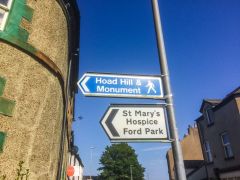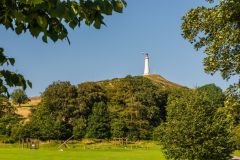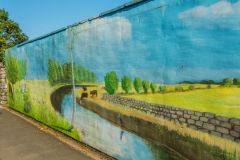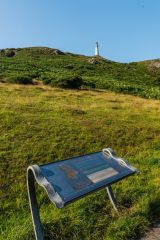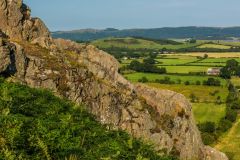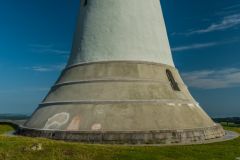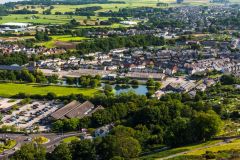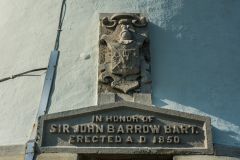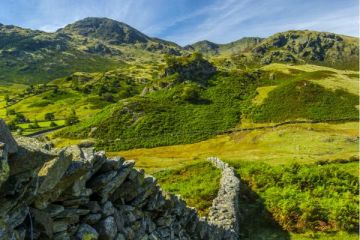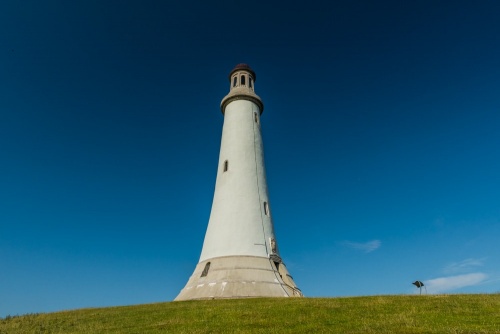
What's in a name? Sometimes, not a lot! The Hoad Monument, as it is popularly known, ought more properly to be called the Sir John Barrow Monument. This highly visible memorial - which looks like a huge lighthouse - stands on the summit of Hoad Hill, overlooking the town of Ulverston, and is easily seen for miles around.
The monument was erected in 1850 in memory of Sir John Barrow, a native of Ulverston. Barrow was born in Dragley Beck in 1764, the child of a journeyman tanner. From such a humble beginning, Barrow rose through the ranks of the navy to become the second secretary of the Admiralty.
Barrow is best known for his promotion of voyages of exploration and scientific discovery. He supported attempts to find a northwest passage to the Orient, and also sent expeditions to West Africa. He was one of the founders of the Royal Geographic Society in 1830, and a prolific writer of works covering biographies of figures as diverse as John Macauley and Peter the Great of Russia. He also wrote a history of Arctic exploration.
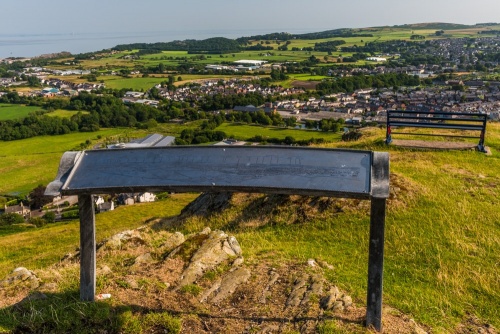
Barrow died in 1848 and is buried in London. Ulverston wanted a monument to their most famous son, and the result is the striking structure atop Hoad Hill. Sir John is known to have enjoyed visiting the Hill during his childhood.
The likeness to a lighthouse is intentional; the monument was built to look like the Eddystone Lighthouse in Devon. There is a staircase of 112 steps up the inside of the monument, leading to a lantern chamber, giving wonderful views over Morecambe Bay. The total height of the monument is exactly 100 feet, though it looks much higher due to the height of Hoad Hill.
The total cost of the monument was 1250 pounds, most of it raised by public subscription. One of the largest donors was Trinity House, who stipulated that the money was given only on the condition that the Monument should never have a functional light. In other words, they didn't want t to actually be a lighthouse. This stipulation gave rise to the Monument's nickname, 'The Lighthouse without a Light'.
The architect of record was Andrew Trimen, and it was built using local labour. The tower is built of local limestone quarried at Birkrigg Common. The foundation stone was laid by Sir John's two sons, Sir George Barrow and his brother John.
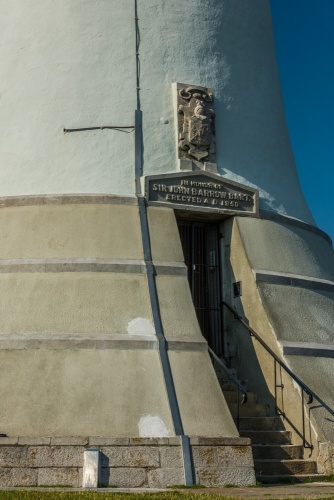
Only 21 days after its official completion in 1851 the Monument was struck by lightning. Not surprisingly it is now fitted with a lightning conductor! More damage followed in 1897 when townsfolk celebrating Quen Victoria's Diamond Jubilee lit a beacon on Hoad Hill near the Monument. Heat from the fire badly affected the tower's surface.
The tower had a room at the base for the 'lighthouse keeper', whose job was to maintain the monument and open it to visitors. There is still an official keeper (though he no longer lives on site), who acts for the Sir John Barrow Trustees.
The stairs up the monument have had to be closed due to safety concerns, but as of this writing, plans are underway to refurbish the monument and open the stairs to visitors once more. You can easily view the monument from the outside, however - indeed, it is hard not to view it, so easily can it be seen for miles around the town!
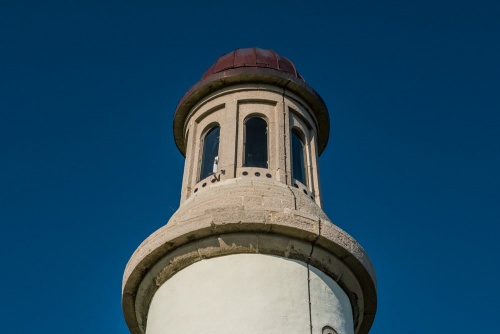
Getting There
The easiest way to visit the Monument is to take the signposted footpath that leads through Ford Park. There is a small parking area inside the park, near the cafe, but here's the full route from the main visitor car park on Brewery Street, near the town centre.
From the parking area take BrewryStreet north to Hart Street and turn right. Go straight on Hart Street, following the obvious blue pedestrian signs for the Hoad Monument. This will take you directly to Ford Park.
Here you have a choice of turning left on Ford Park Crescent to follow the park boundary or going through the park entrance and follow the tarmacked road to the cafe and walled garden. Both routes take about the same time to cover.
If you've opted to go straight through the park simply continue straight past the walled garden, following the obvious signs and you will come to a gate at the far end of the park. Go through the gate and you will rejoin the alternate route around the park boundary.
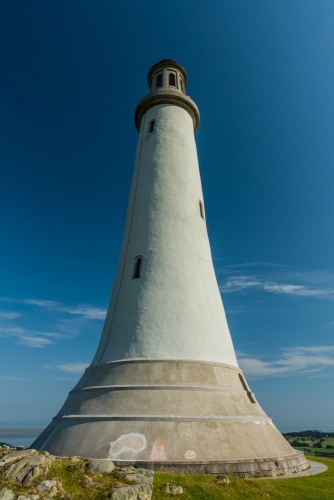
You are now on a very clear tarmacked path that skirts around the base of Hoad Hill on its south and east, heading gradually higher and higher. The route climbs around the back of the hill and you come to the Monument from the rear.
There is an information panel at the start of the path and several more panels with panoramic indicators showing points on the distant horizon arranged around the base of the monument itself.
The climb is relatively steep but short. From the base of Hoad Hill, it should take no more than 15 minutes to reach the Monument.
About Hoad Monument
Address: Ulverston,
Lake District,
Cumbria,
England, LA12 7LD
Attraction Type: Historic Building
Location: The monument is easily visible from Ulverston. Park near the church and take a footpath through Ford Park to the top of Hoad Hill for superb views.
Website: Hoad Monument
Location
map
OS: SD294790
Photo Credit: David Ross and Britain Express
HERITAGE
 We've 'tagged' this attraction information to help you find related historic attractions and learn more about major time periods mentioned.
We've 'tagged' this attraction information to help you find related historic attractions and learn more about major time periods mentioned.
Historic Time Periods:
Find other attractions tagged with:
Victorian (Time Period) -
NEARBY HISTORIC ATTRACTIONS
Heritage Rated from 1- 5 (low to exceptional) on historic interest
Laurel and Hardy Museum - 0.7 miles (Museum) ![]()
Swarthmoor Hall - 1.3 miles (Historic House) ![]()
Holker Hall - 4.1 miles (Historic House) ![]()
Gleaston Castle - 5.2 miles (Castle) ![]()
Cartmel Priory Gatehouse - 5.2 miles (Abbey) ![]()
Cartmel Priory Church - 5.2 miles (Historic Church) ![]()
Dalton Castle - 5.3 miles (Castle) ![]()
Dalton-in-Furness, St Mary's Church - 5.3 miles (Historic Church) ![]()
Nearest Holiday Cottages to Hoad Monument:
Ulverston, Cumbria
Sleeps: 4
Stay from: £491 - 2249
Ulverston, Cumbria
Sleeps: 6
Stay from: £853 - 3285
More self catering near Hoad Monument
